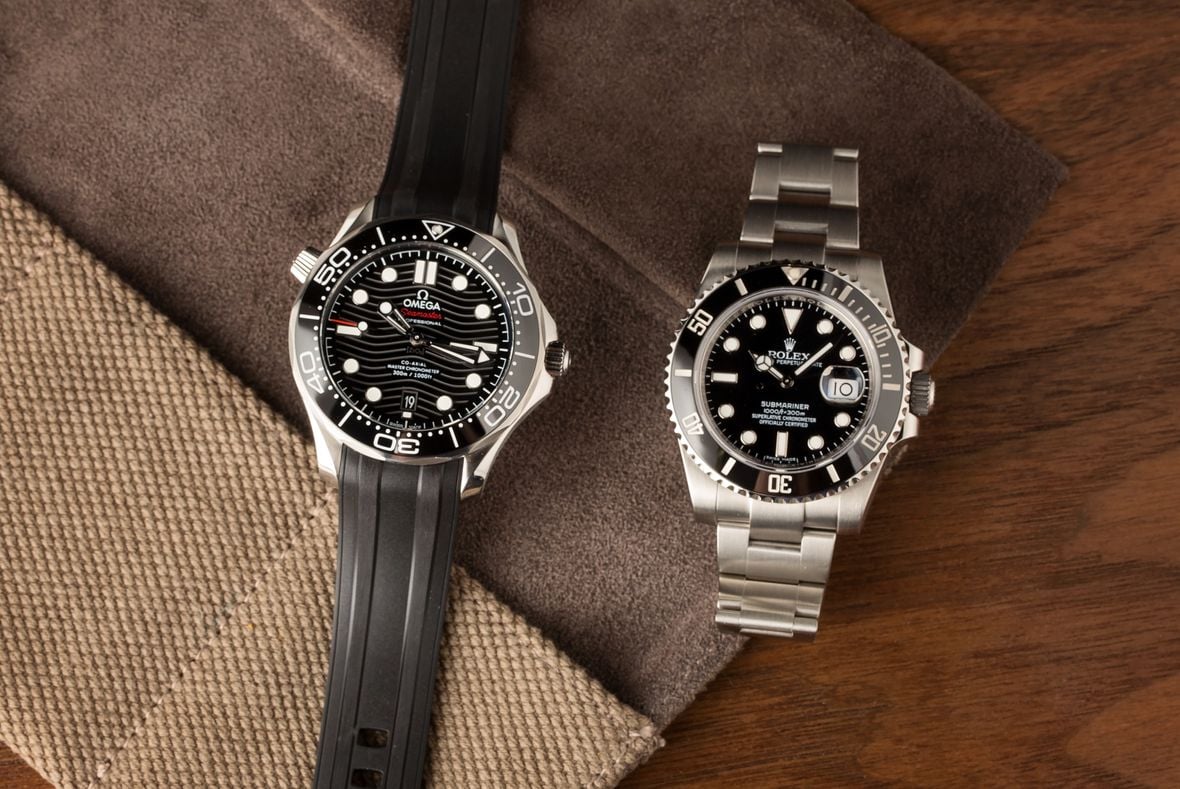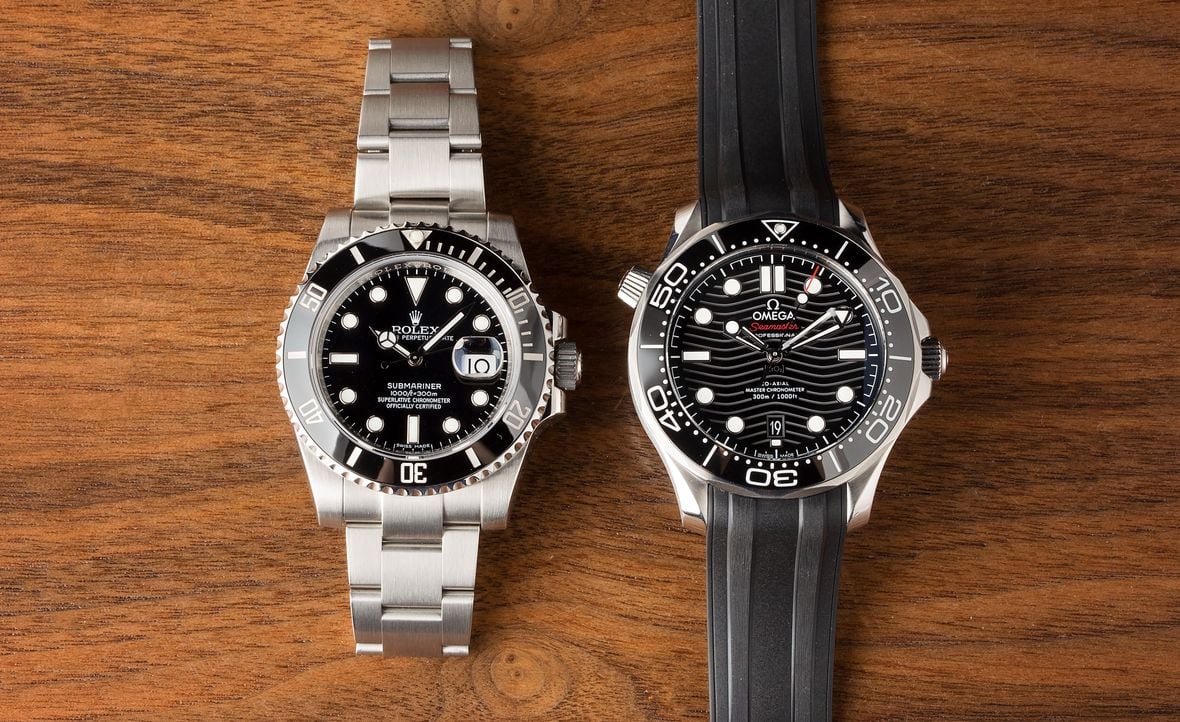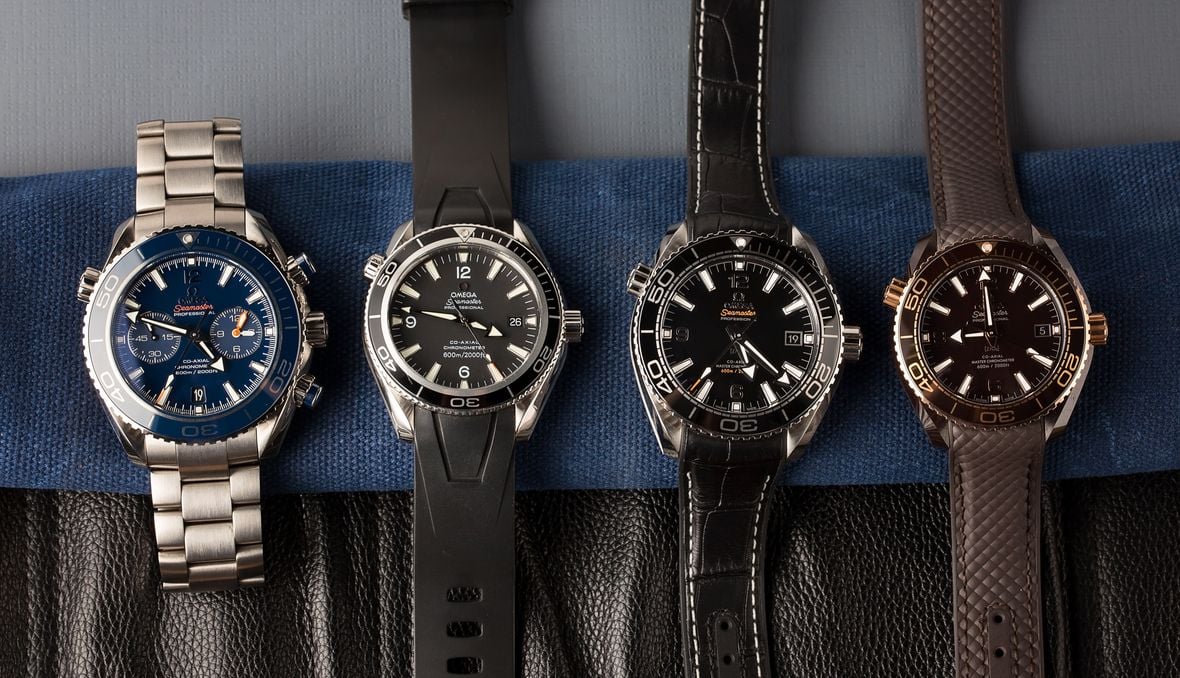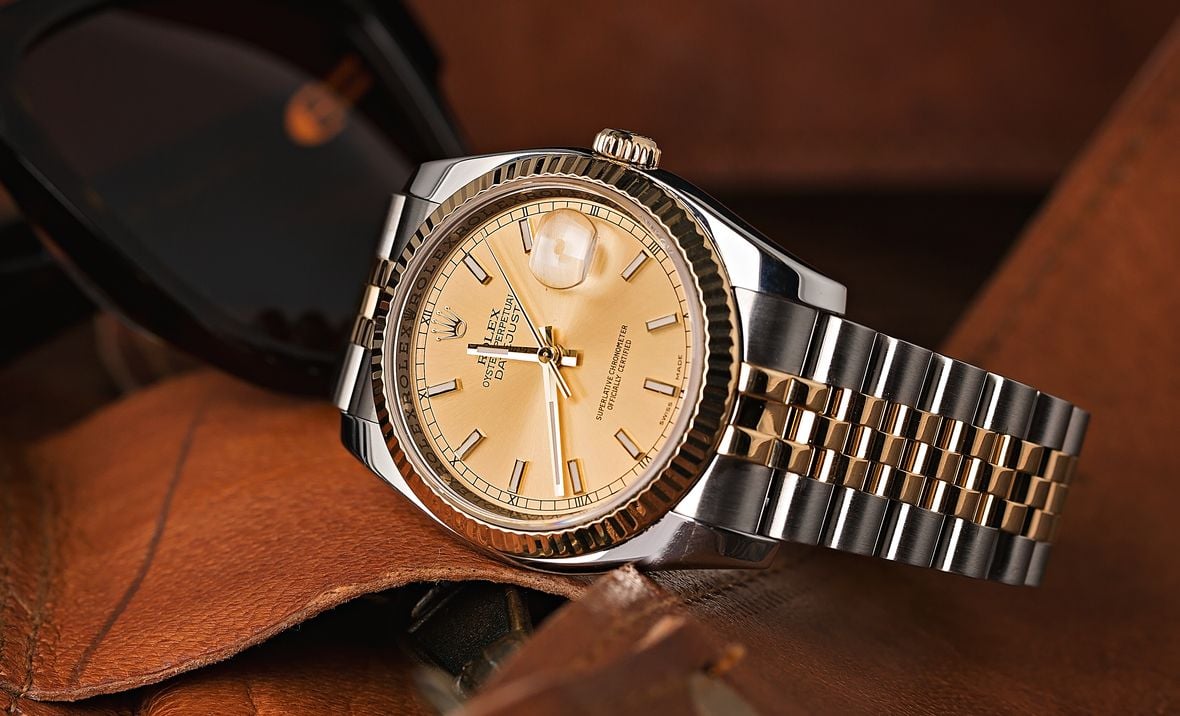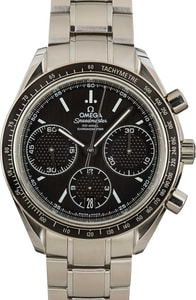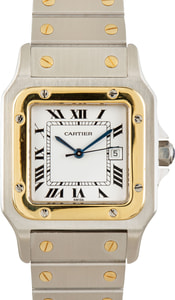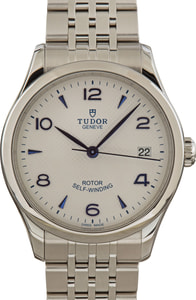If there’s one thing guaranteed to really capture our imaginations and stir up some passion, it is a good old fashioned rivalry. We are all guilty of adopting our favorite example of something and defending it to the hilt against its closest competitor.
There are a number of these clashes in the horology world, and perhaps none more so than between the Luxury watch brand Rolex and Omega watches. In some cases, one of these behemoth brands has introduced a model specifically to try and claw back some of the ground gained by the direct equivalent from its bitter adversary. For example, it could be argued that the Rolex Daytona only came into being in an attempt to clip the wings of the Omega Speedmaster, and the two have been duking it out ever since. (We’ll let you know who wins and soon as it’s decided).
However, it is in the world of dive watches that the most fascinating of these confrontations have been fought. Fans of both manufactures will forever debate the individual virtues of two of the industry’s most outstanding and important timepieces, each a true heavyweight in its own right; the Rolex Submariner and the Omega Seamaster. Below, we offer our take on the question and examine the duo side-by-side.
The Rolex Submariner ref. 116610LN
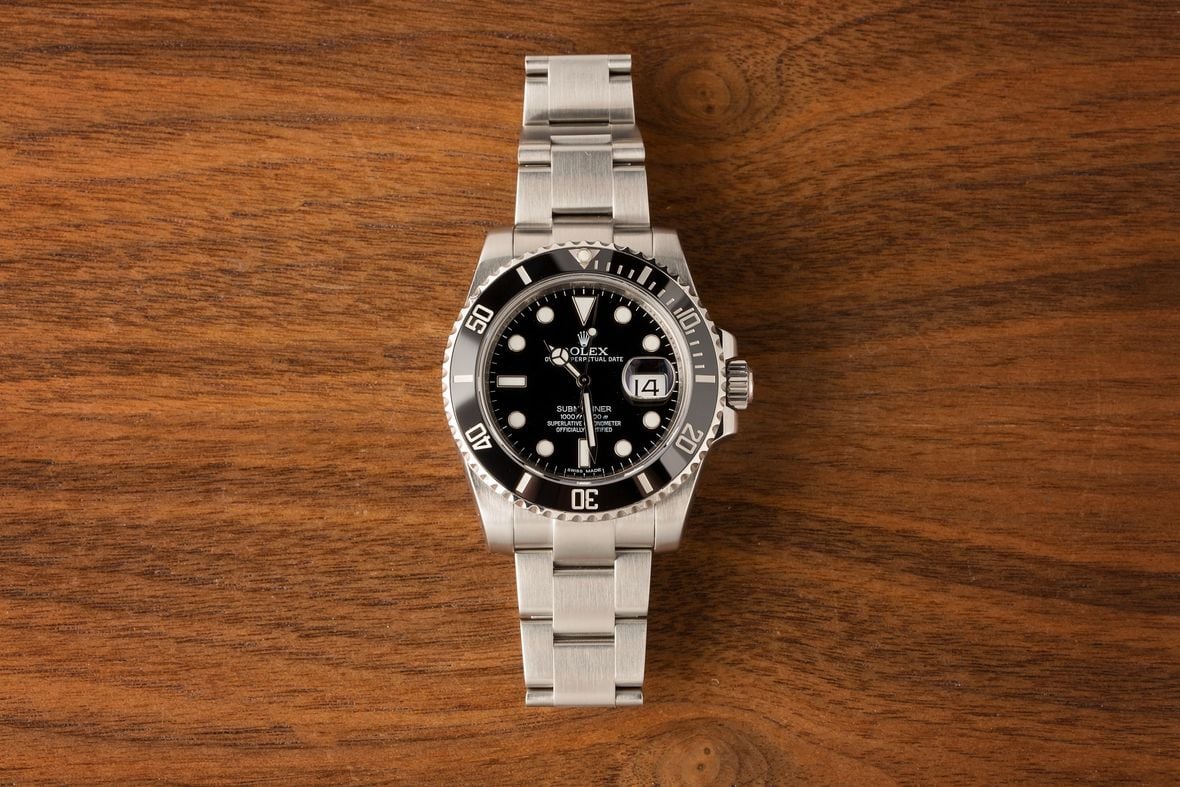
Submariner 116610LN Key Features:
Case Size: 40mm
Materials: Stainless Steel (904L)
Functions: Time w/Running Seconds, Date Display
Dial: Black w/ Luminous Hour Markers (Chromalight)
Bezel: Unidirectional, Black Cerachrom Insert w/ 60-Minute Scale
Crystal: Sapphire, Flat w/Cyclops Lens
Water Resistance: 300 Meters / 1,000 Feet
Movement: Caliber 3135 (Superlative Chronometer)
Strap/Bracelet: Oyster Bracelet (904L Stainless Steel)
Click here for our Ultimate Buying Guide on the Rolex Submariner.
The Omega Seamaster Diver 300M
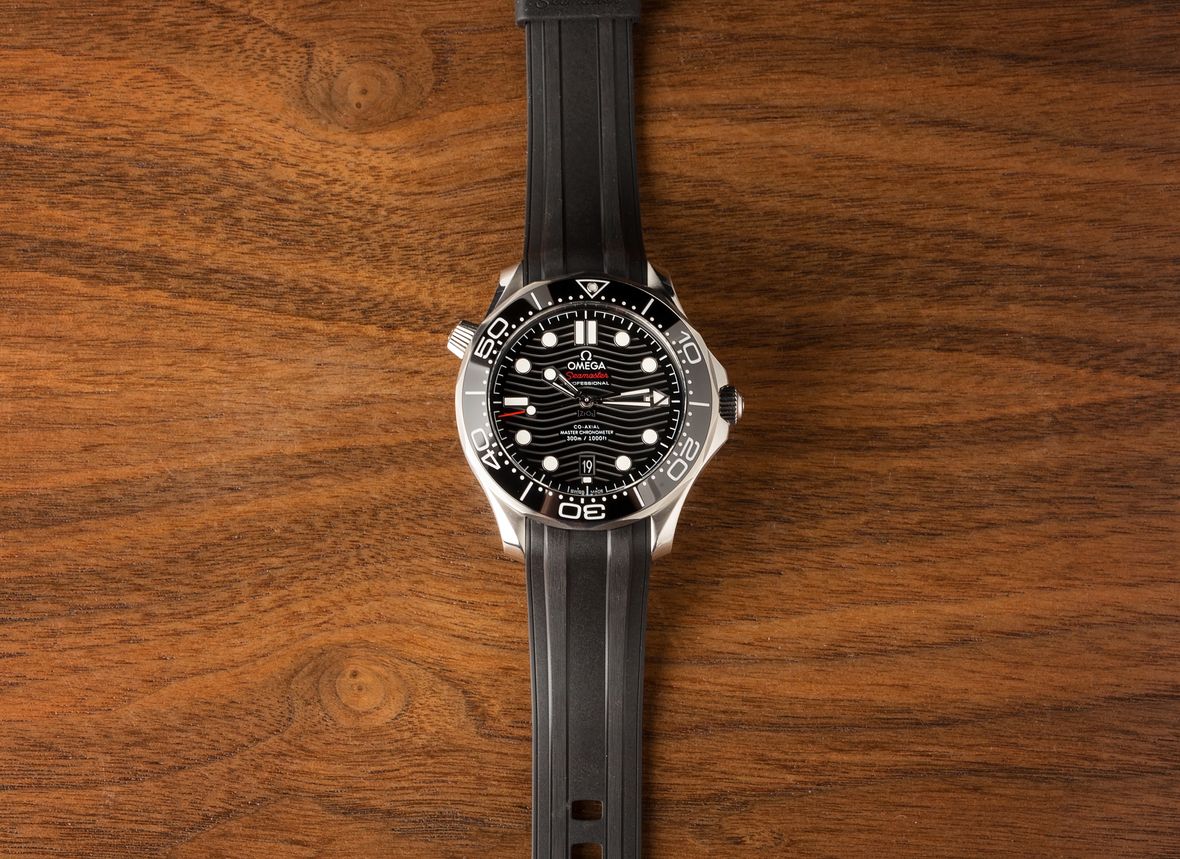
Seamaster Diver 300M Key Features:
Case Size: 42mm
Materials: Stainless Steel (316L)
Functions: Time w/Running Seconds, Date Display, Helium Escape Valve
Dial: Ceramic (White/Grey/Black/Blue), Laser-Engraved Wave Pattern w/ Luminous Hour Markers
Bezel: Unidirectional, Black ceramic Insert w/ 60-Minute Scale
Crystal: Sapphire (domed)
Water Resistance: 300 Meters / 1,000 Feet
Movement: Caliber 8800 (Master Chronometer)
Strap/Bracelet: Five-Link Bracelet (316L Stainless Steel)
Click here for our Ultimate Buying Guide on the Omega Seamaster.
The sharp-eyed among you will have spotted something straight away. The Rolex Submariner ref. 116610LN is not from the most recent generation of the Sub that was just released in 2020, but from the series before. However, to keep things on as even a keel as possible, seeing as the current version of the Seamaster has been around since 2018, it didn’t seem fair to compare it to a watch that was only introduced a matter of months ago.
Likewise, there are a lot of Omega Seamaster Diver 300M models in the catalog, in a whole range of different metals, sizes, and with a host of various complications. Consequently, we are going to go for a simple time-and-date model in stainless steel, which leaves us with the Omega 210.30.42.20.0X.001. (The X denotes the dial color, of which there are four – black, grey, white, and blue).
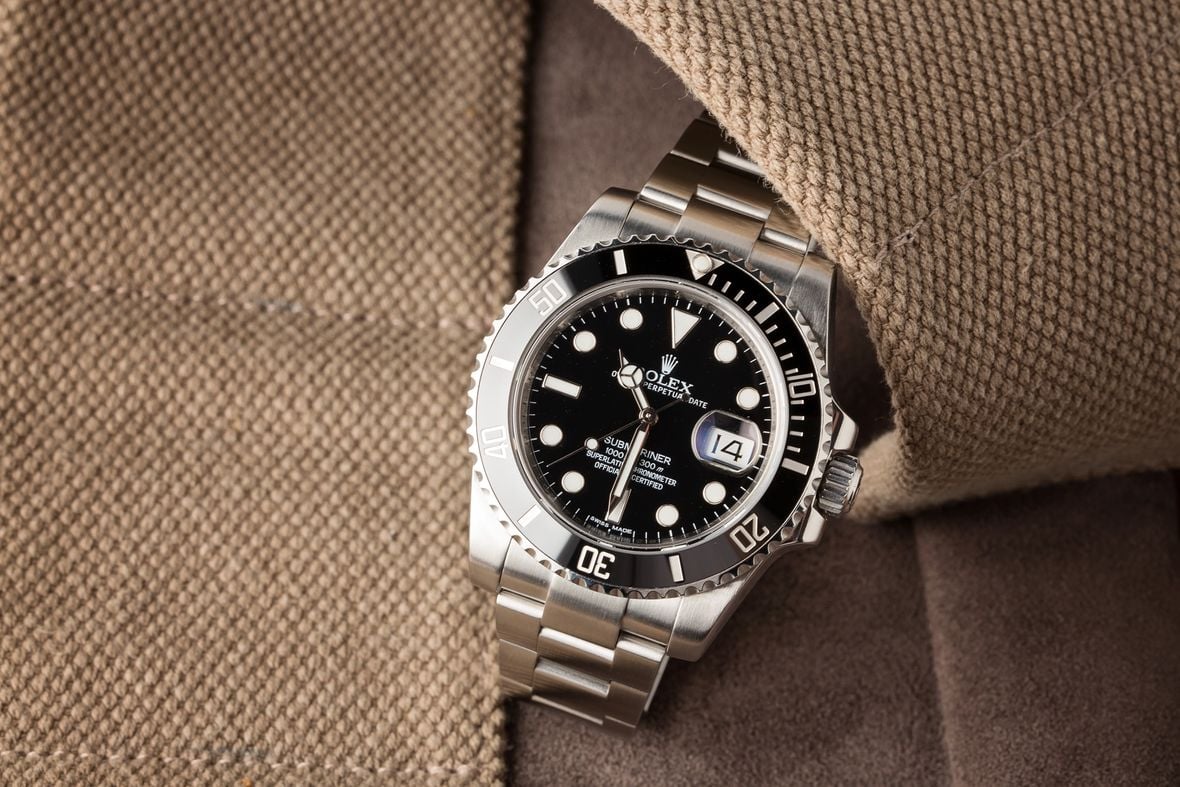
Rolex Submariner Vs. Omega Seamaster: Looks
The appearance of a watch may be the single most subjective feature, but it is still worth highlighting the key similarities and differences between the Rolex Submariner and the Omega Seamaster Diver 300M.
Rolex Submariner Looks
We’ll compare the looks of our competitors first because, let’s be honest, that is by far the most important factor for the vast majority of buyers. It also brings up an interesting contrast on how Rolex and Omega operate. Of the two watchmaking legends, it is Rolex that has always achieved a much greater consistency in its designs.
The Submariner has been with us for nearly 70-years now, and during that time it has gone through innumerable upgrades and revisions. Yet, take an example of the very first reference, the ref. 6204, and stand it up next to a ref. 116610LN and the pedigree is unmistakable. A Submariner is a Submariner – and it always will be.
Practically from the very start, all the elements we would recognize today were put in place. The minimalist and high contrast dial, the black engraved bezel, and the easily legible handset. Then, from the end of the 1950s and the arrival of the ref. 5512, Rolex hit on the case design it would stick with for another half a century – a 40mm housing complete with crown guards.
Beyond periodically updating the movement and introducing a date function, the Rolex Submariner was all set. These days it is a ‘tool’ watch in name only, and the introduction of precious metal versions in the 1960s elevated it to its present role as one of the most potent status symbols money can buy. With that in mind, it is always the stainless steel models that are in the highest demand.
Therefore, when the ref. 1166xx series launched in 2010, it was (relatively speaking) a huge departure for a watch whose basics were so ingrained in the horology psyche. Rolex chose to give the Submariner its newly fashioned Super Case. Clearly, an answer to critics who felt the traditional 40mm was simply too small for a modern sports watch, the Super Case, while still keeping the same 40mm dimensions on paper, gained much thicker lugs and crown guards.
The end result was the Rolex Submariner looking thicker and more angular, almost square in shape and feeling as if it was a bigger watch overall. The ref. 116610LN actually wears more like a 42mm (compared to its predecessor), and it was a move that split fans down the middle. Some enjoyed the additional wrist presence, others felt it was bordering on sacrilege to do away with one of the most accepted silhouettes in the entire watch industry.
However, there was still no question of the ref. 116610LN being mistaken for some other watch. Everything else was exactly as it should be, even though some of the materials were also given a refresh (which we’ll cover later). However, it has left the reference as somewhat of a standout in modern Submariner terms. Its replacement from 2020 may have grown by a millimeter, but it has slightly returned to the model’s former sweeping lines.
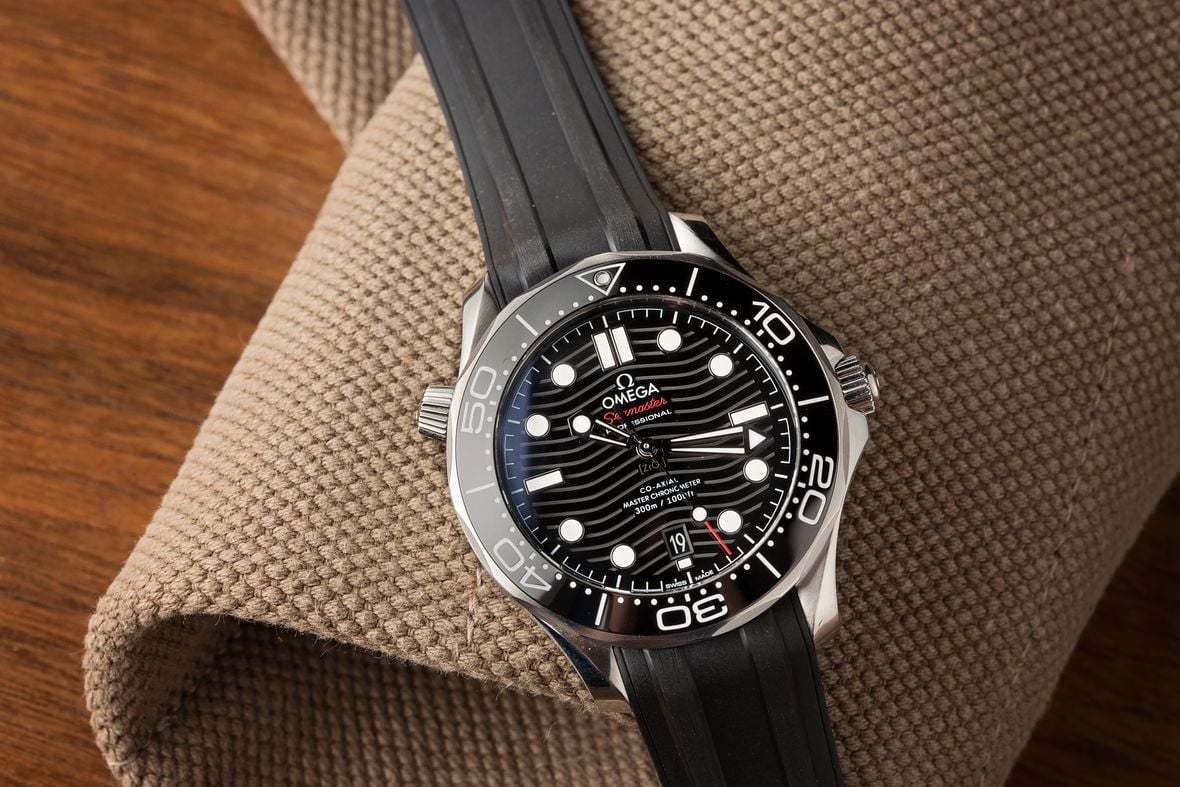
Omega Seamaster Diver 300M Looks
Omega’s crop of watches has always had a more scattergun approach than those from Rolex. The brand has just a handful of collections in their portfolio, covering dive watches, chronographs, formal pieces, etc., and new creations are shoehorned into one of these various families somewhere or other. So we are now in a position where the Railmaster, for example, a model originally designed for scientists and engineers, is officially in the Seamaster group.
While there is a definite lack of cohesion compared to Rolex’s ultra-streamlined catalog, it is no detriment to the quality of Omega’s watches. The Seamaster name has been in use since 1948 when Omega introduced it on a dress model with not very much to justify the title. The first time it was really applied to a dive watch as we would consider it today was in 1957 when the Seamaster 300 debuted.
However, adding to the confusion surrounding the Seamaster collection, Omega brought out the Seamaster Diver 300M in 1993, with the names much more similar than the watches themselves. This was designed from the get-go as a Submariner killer, a thoroughly modern diver with plenty of functionality and some idiosyncratic design quirks, all looking to unseat the undisputed ruler of the oceans.
An extremely handsome, 41mm piece, the Omega Seamaster Diver 300M included skeletonized hands, a scalloped bezel, and a Helium Escape Valve, all features that carry over onto the latest iteration. The current model has grown to 42mm and has reintroduced the wave pattern onto its dial, something which appeared on the first few references but was missing for five years between 2012 and 2017.
It is certainly a distinctive looking face, although busier than that of the Submariner but still offers excellent legibility across the range of colors. The blue, black, and white dial versions are perfectly readable, with only the grey requiring a little more effort. Ultimately, the Submariner and Seamaster are two of the best-looking luxury divers available today, and both are more than versatile enough to be worn dressed up or down.
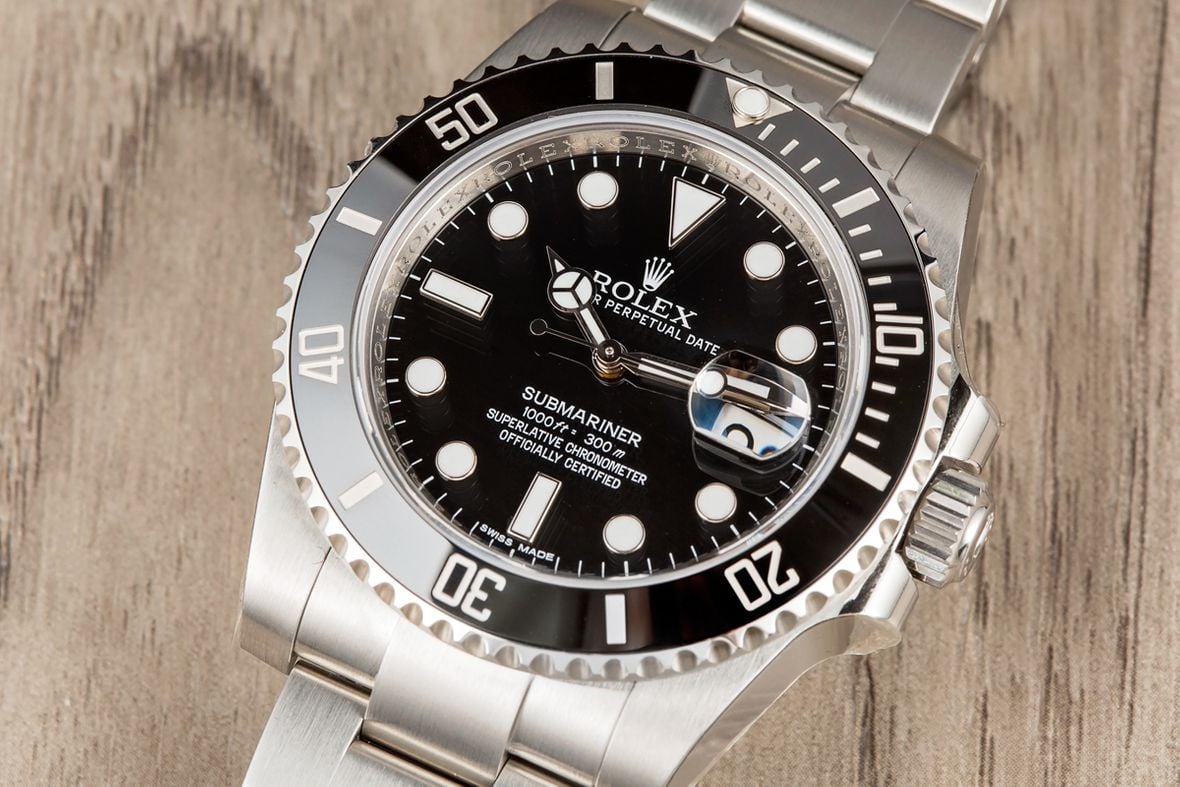
Rolex Submariner Vs. Omega Seamaster: Materials
For this comparison, we are looking at the stainless steel examples of both the Rolex Submariner and the Omega Seamaster Diver 300M, but this does not mean that these two professional dive watches use the exact same materials in their construction.
Rolex Submariner Materials
How do you make the latest version of your watch stand out if the aesthetics have been set in stone for generations and you don’t want to change them? What can you offer that will make people opt for the newest model over one they possibly already have?
One of the answers seems to be an improvement in materials. The ref. 1166xx series of the Rolex Submariner was the first to be given the brand’s Cerachrom bezel, a proprietary ceramic alloy that is touted as being completely scratch and fade resistant, with the engraved graduations coated in either gold or platinum to preserve their integrity and brilliance.
This means that the bezel is likely to stay looking brand-new forever, as it is immune to the knocks and scrapes of everyday life and the bleaching effects of the sun or salt water. The benefits of ceramic are being pounced on by a number of top manufacturers at the moment, but not all collectors are so enthusiastic about this modern and highly resilient material.
Many collectors, especially vintage fans, like their watches to have a backstory. A model with its history reflected in its faded bezel can actually command a premium on the pre-owned market. Classic Submariner watches with aluminum inserts that have been bleached by UV rays or time spent underwater (called “ghost bezels”) are actively sought out for their one-of-a-kind nature. There will be no other example aged in exactly the same way, something we won’t be able to say about Cerachrom bezel watches in 30 or 40 years.
Elsewhere on the Submariner, Rolex is still leading the way. The brand’s adoption of 904L stainless steel in the mid-80s (now rechristened Oystersteel) threw down a gauntlet no other brand has yet picked up. Expensive and extremely difficult to machine, Oystersteel has a greater corrosion resistance than the 316L steel used across the rest of the industry, as well as holding a polish particularly well. This means that a stainless steel Rolex watch has a unique shine to it.
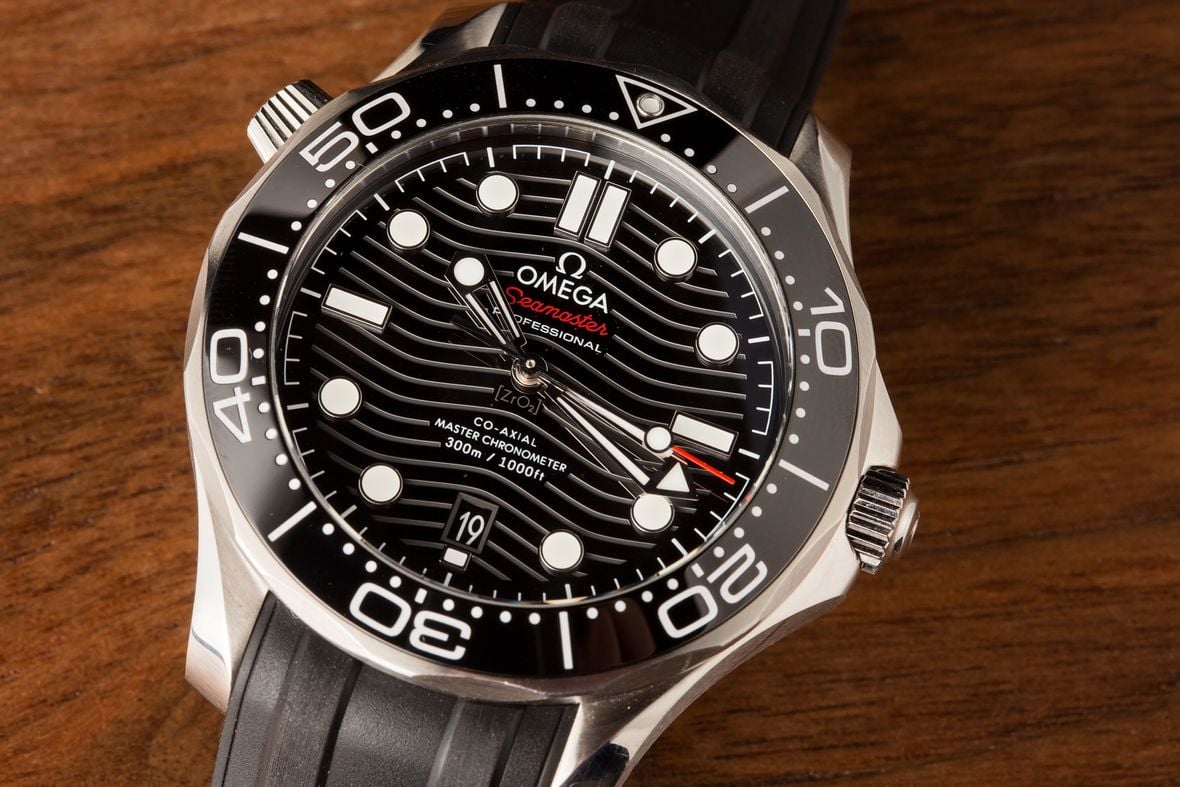
Omega Seamaster Diver 300M Materials
The latest Omega Seamaster Diver 300M, released in 2018 for the model’s 25th anniversary, also has a ceramic bezel, but with a white enamel dive scale. That means it misses out on the Liquidmetal treatment reserved for the brand’s Planet Ocean range, but it is a beautifully engineered component nonetheless.
However, unlike the Submariner, the Omega Seamaster also has a ceramic dial. Or to be more precise, a zirconium dioxide ceramic dial, identified by the material’s chemical symbol (ZrO2) displayed on the dial beneath the central pinion where the hands attach. All that should ensure that your watch stays looking exactly the same color for the rest of its life.
However, there are a couple of areas where the Omega Seamaster Diver 300M can’t quite match the Rolex. While the Submariner, and the rest of the brand’s watches, use 18k gold for handsets and for outlining hour markers to prevent future tarnishing, the ones on the Seamaster are steel with a rhodium plating.
The luminescent material used on the Omega Seamaster is Super-LumiNova versus Rolex’s proprietary Chromalight. Whether or not one is “better” than another is up for debate, but it is said (by Rolex, admittedly) that the blue glow of their Chromalight is easier to see in the dark than the Super-LumiNova and lasts twice as long (although most owners report that it isn’t quite as bright).
Finally, both watches have scratch-resistant sapphire crystals. On the Seamaster, it is slightly domed and treated with an anti-reflective coating on both sides, while on the Submariner it is flat with the brand’s signature Cyclops magnification lens positioned above the date window at the 3 o’clock location.
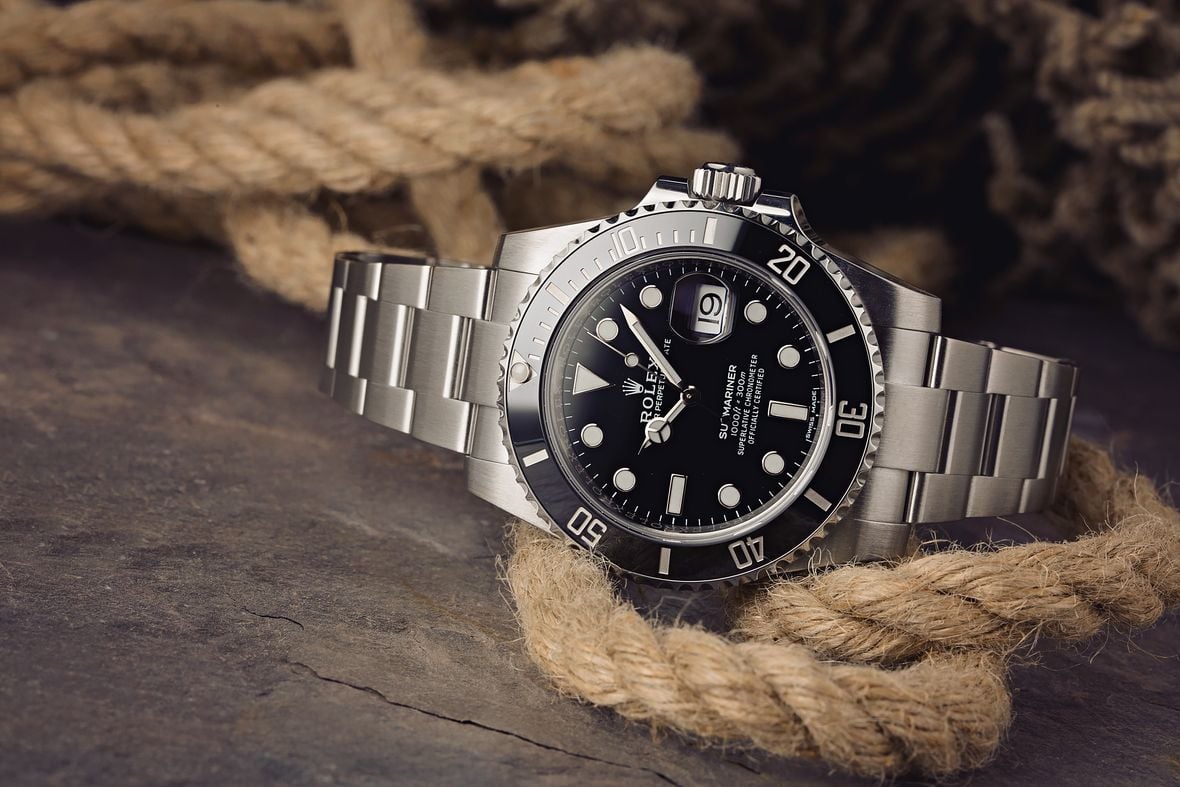
Rolex Submariner Vs. Omega Seamaster: Movements
While both the Rolex Submariner and the Omega Seamaster Diver 300M feature chronometer-certified movements that are designed and manufactured entirely in-house, there are some key differences between them.
Rolex Submariner Movement
When the Rolex Submariner 116610LN first came out in 2010, its movement was already some 22-years old. The Caliber 3135 was and is Rolex’s most successful and widely-used caliber, first built in 1988 and still fitted inside some models today. Regarded as one of the finest mass-produced mechanical movements ever created, it’s the perfect engine for a hardy sports watch; physically large and relatively simple, it is a no-frills workhorse with remarkable resilience and accuracy.
By the time of the ref. 116610LN’s release, the Cal. 3135 had received a number of updates, most importantly with the inclusion of Rolex’s proprietary blue Parachrom hairspring. The incredibly fine coil that regulates the frequency of the balance wheel (and thus timekeeping), the hairspring’s biggest enemies have always been changes in temperature and the disruptive effects of magnetic fields.
Rolex overcame both with Parachrom, an alloy of niobium and zirconium with an oxide coating that is completely antimagnetic and virtually unaffected by fluctuations in the ambient temperature. First used in the Daytona’s Cal. 4130, it now sits inside nearly every Rolex movement.
While the brand may have long ago abandoned the idea of its watches being the full-blooded tool models they once were, they still retain some of that original idea, and nowhere more than in the calibers which drive them. There’s nothing fancy about a Rolex movement, no indulgent finishing on the bridges or a display case-back anywhere in the catalog to let you see them working away. What they are instead is so robustly engineered they will just keep on ticking forever, all the while keeping to Rolex’s own self-imposed precision guidelines of -2/+2 seconds a day – and you can’t really ask for more than that.
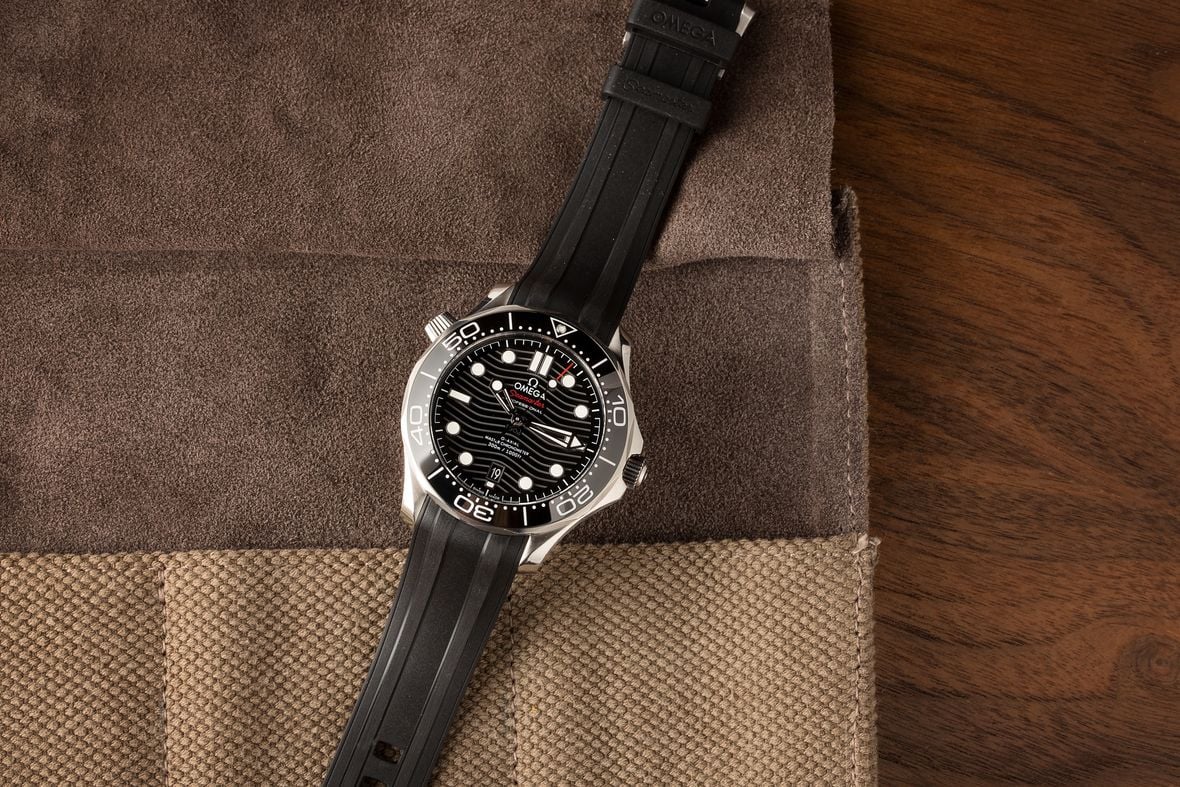
Omega Seamaster Diver 300M Movement
Omega’s dedication to revolutionizing its movement portfolio is well known. The brand was the only company with the foresight to adopt George Daniels’ groundbreaking Co-Axial escapement when he came knocking in the 1990s and Omega has been capitalizing on it ever since. Additionally, the brand’s cooperative with the Swiss government’s METAS regulation agency has meant that its calibers now conform to some of the most stringent accuracy standards in the entire industry.
Inside the latest edition of the Omega Seamaster Diver 300M is the in-house Caliber 8800, one of the brand’s Master Chronometer movements. This certification, conducted in-house at Omega in tests controlled by METAS, guarantees not only an accuracy of between 0/+5 seconds a day but also that the movement is able to withstand up to 15,000 gauss of magnetic force. Although Rolex doesn’t publish its numbers for the Cal. 3135, its magnetic resistance is assumed to be less than 1,000 gauss (since this is the magnetic resistance promised by the Milgauss, the Rolex’s antimagnetic watch for scientists).
On top of that, Omega has employed a special hairspring of its own to rival Rolex’s Parachrom, a type of silicon called Si14. In terms of real-world use, whether or not one is better than the other is another cause for discussion, but it shows a continuation of the sort of forward-thinking that has seen Omega very much close the distance between itself and Rolex in recent years.
Elsewhere there isn’t a huge amount to separate the two watches’ movements. The Omega Cal. 8800 just pips the Rolex on power reserve, with 55 hours compared to 48. Additionally, the Seamaster has a sapphire case-back to offer a view of all the brand’s hard work and innovation. As for the Co-Axial escapement, its major USP is a reduction in service intervals thanks to its unique way of frictionless operation. With that in mind, the recommended maintenance schedule for both watches is around five years, so in that respect, there seems to be nothing to choose between them.
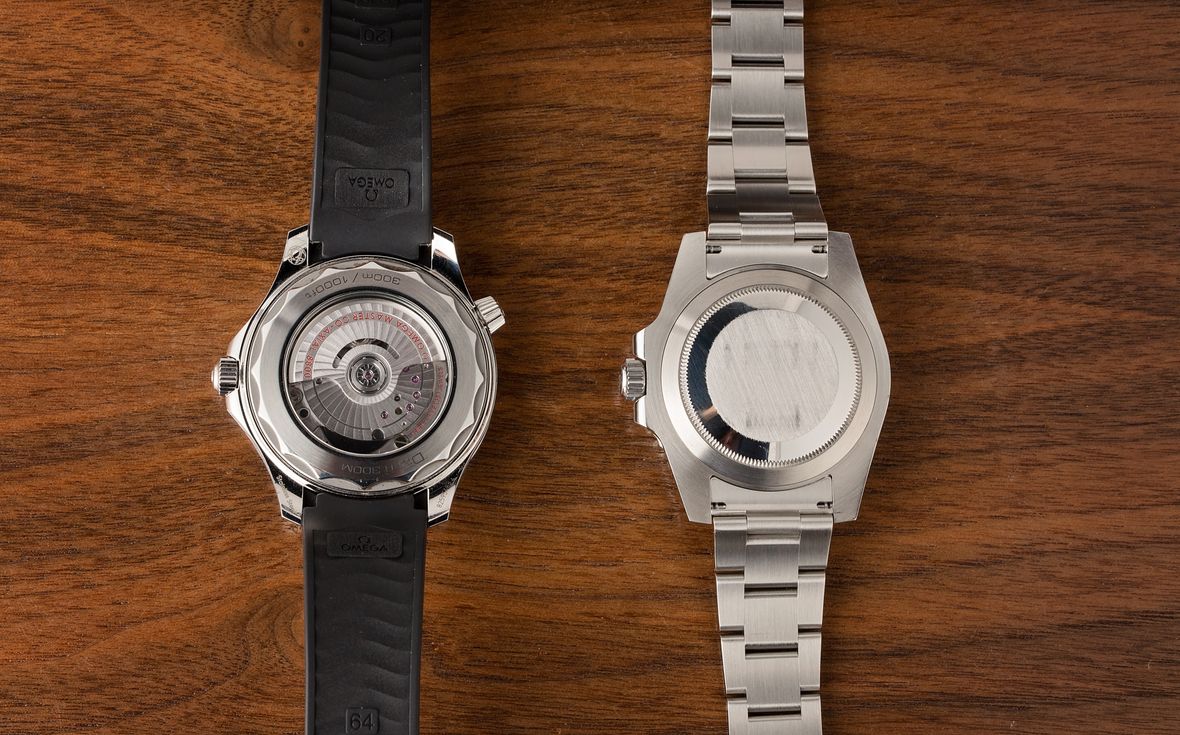
Rolex Submariner Vs. Omega Seamaster: Functions
As far as functionality, the Rolex Submariner and the Omega Seamaster Diver 300M are incredibly similar, but this does not mean that these two professional dive watches do the exact same things.
Rolex Submariner Functions
The Rolex Submariner ref. 116610LN is, like everything the brand makes with the exception of the Cellini collection, part of the Oyster Perpetual family. That means it has both a self-winding movement (the ‘Perpetual’ part) and a waterproof case (the ‘Oyster’ part of its name).
The Oyster case ensures every Rolex watch has a water resistance down to at least 100 meters, and with the Submariner, a thicker housing coupled with a Triplock crown means that it is rated to 300 meters (1,000 feet). It is the ideal companion for recreational diving as well as being more than tough enough to survive the majority of day-to-day situations on dry land.
Other than its impressive levels of protection, the Submariner is fairly modest in its functionality. It obviously has a rotating bezel, undoubtedly the easiest and most foolproof way of recording elapsed time. Simply turn the bezel so that the triangle above the 12 o’clock (the zero marker) aligns with the minute hand, and as the hand moves around the dial, it shows how many minutes have passed against the 60-minute scale on the bezel.
Beyond that, the Submariner 116610LN is a time-and-date model, the Cal. 3135’s balance frequency of 28,800vph ensures that gentle, eight-beats-per-second glide of the seconds hand. The date display, for better or worse (some fans love it, others don’t) sits in its usual position at three o’clock covered by the Cyclops magnifying lens, and the movement’s cam and jewel system causes the instantaneous changeover right at midnight.
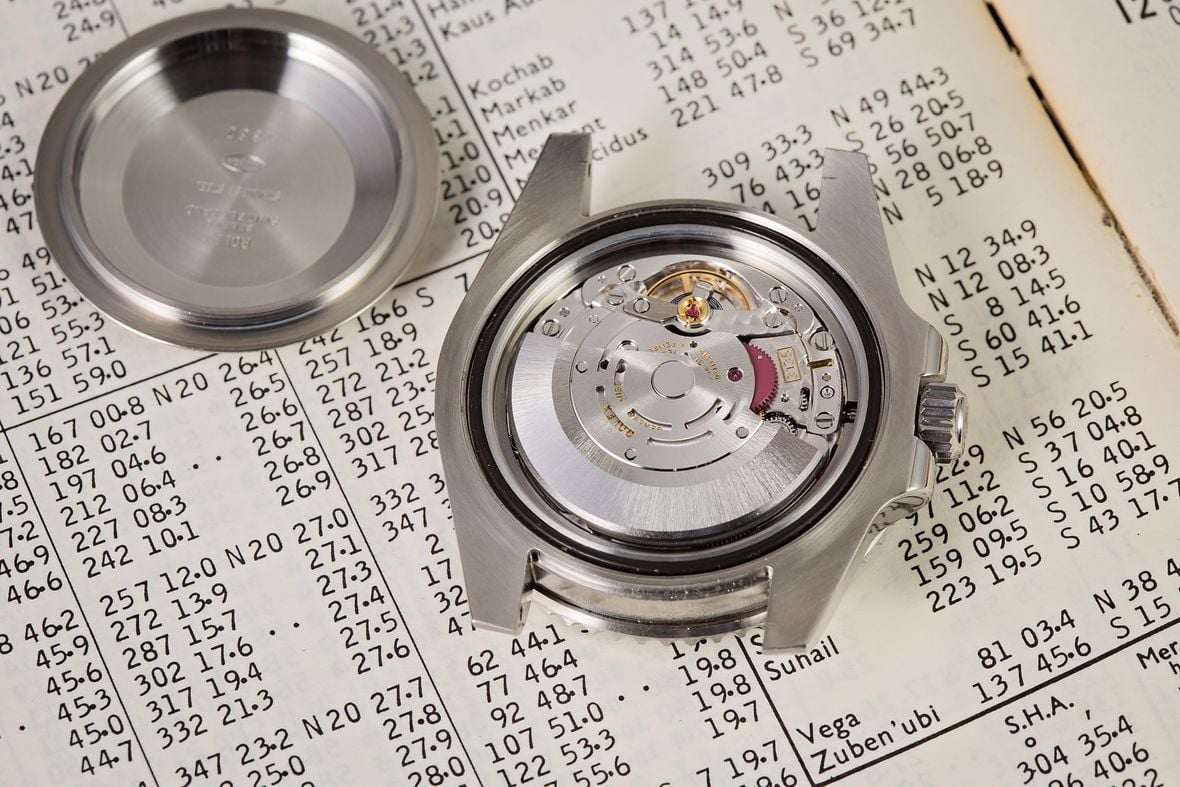
Omega Seamaster Diver 300M Functions
The Omega Seamaster is very similar in its abilities to the Submariner. It too is a date-and-time piece, although its non-magnified date display has moved on this latest generation from the three o’clock location to six o’clock. It leaves the dial looking more symmetrical than before, and possibly better balanced overall than the Rolex Submariner. Water-resistance is identical at 300 meters (which is not really a surprise given the watch’s name).
The Seamaster’s bezel is also unidirectional with a 60-minute scale. However, the watch has received criticism from some in the past for its bezel being slightly tricky to turn, particularly when wearing gloves or with wet/greasy hands. Its shallow, scalloped knurling is not as easy to grip as the Submariner’s serrated edge, so Omega has slightly reduced the tension on the newest version, making the action noticeably smoother.
That being said, the Omega Seamaster Diver 300M does have one thing the Submariner doesn’t have (or need). The manually-operated helium escape valve has been a feature on the watch since its first iteration in the 1990s, protruding from the side of the case at 10 o’clock. In some ways it is a nice decorative feature, complementing the crown on the other side. But as far as usefulness is concerned, it has pretty much none – at least for the vast majority of its owners.
The helium escape valve (HEV) was actually invented by Rolex, ironically enough, as a solution to a problem encountered by commercial saturation divers. These professionals spend much of their time living in extremely deep water habitats. At those depths, the nitrogen has been replaced by helium in the air mix the divers breathe; this solves the issues surrounding the narcotic effects of nitrogen when it is put under great pressure.
The drawback is that helium molecules are some of the smallest in existence, and eventually they can seep past a watch’s gaskets (or enter the case as soon as the wearer needs to adjust the time or date). As the diver returns to the surface, and the pressures inside the habitat return to normal, the trapped helium molecules expand and can blow the crystal clear off the watch.
The valve was developed as a way to let the gas safely escape before it causes any damage. Therefore, an HEV on a dive watch is largely pointless unless you happen to be a saturation diver. It is designed to be operated in a dry, highly pressurized environment that is saturated with helium and it has nothing to do with the actual water-resistance of a watch.
Many serious scuba divers actually dislike the addition, seeing as it one extra point of potential water ingress. The valve on the Omega Seamaster is also manually operated, unlike the one on Rolex’s Sea-Dweller, which is flush with the side of the case and opens automatically once the internal pressure builds up. Omega does claim, however, that the most recent iteration of its helium escape valve can be safely opened underwater, and while you may not have a use for it, it is still a nice conversation starter.
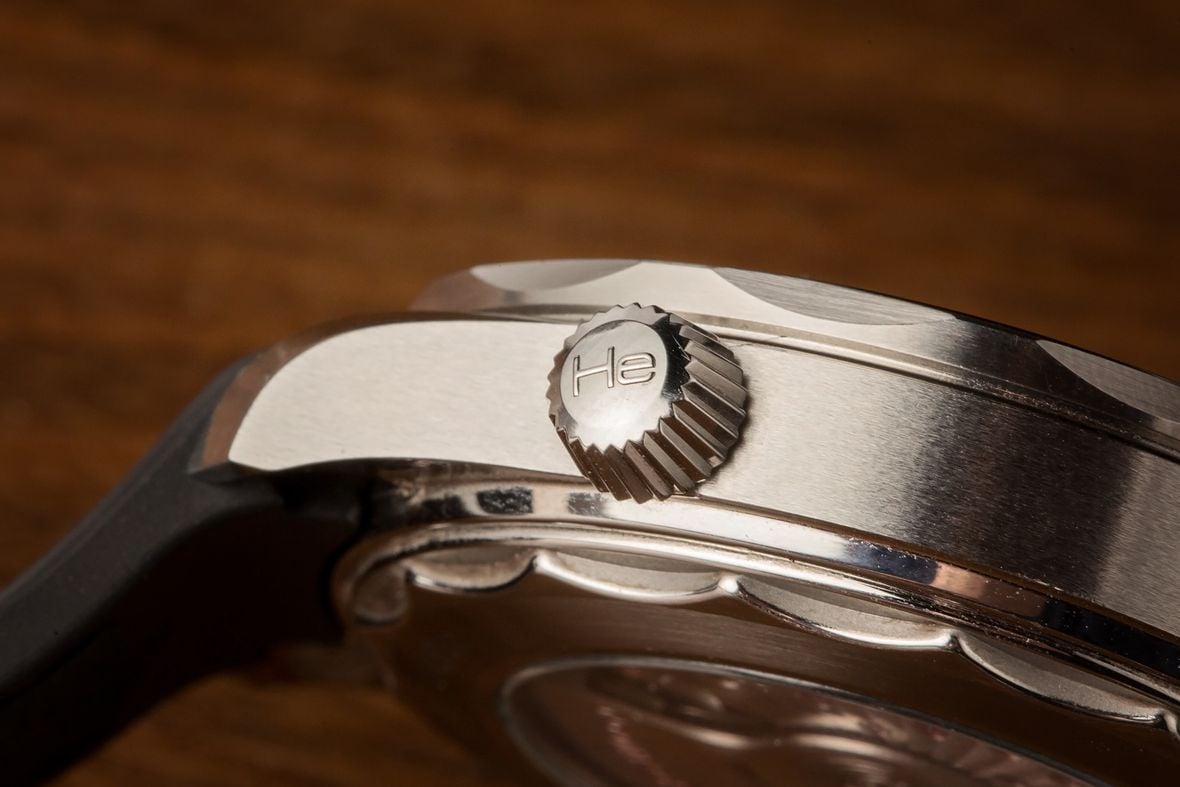
Rolex Submariner Versus Omega Seamaster: Which to Choose?
The decision to go for the Rolex Submariner or the Omega Seamaster Diver 300m usually comes down to two things: looks and price. There’s no way around it, the Rolex Submariner 116610LN is far more expensive than the Omega. Prices on the pre-owned market (your only option now that the watch is discontinued) start at around $11,000 and go up from there. A brand-new stainless steel Omega Seamaster Diver 300m, costs $5,200 on a bracelet, straight from an authorized retailer.
With the Submariner costing nearly twice the price of the Seamaster, this represents a massive difference. But what does the extra money get you? Both watches have very similar capabilities and each has a nice blend of modern materials. If anything, the Omega Seamaster Diver 300m has the edge on technical ability, with its Co-Axial-equipped movement and huge magnetic resistance.
The Rolex Submariner, now in its seventh decade as the last word in luxury dive watches, is as it always has been. It is like the perfectly tailored black tuxedo – the epitome of classic taste and refinement. The Omega is also a perfectly tailored tuxedo, but one that has been matched with a slightly more vibrant and unconventional tie. With that in mind, there is nothing about the Submariner that could be considered controversial or divisive – and for some, that is exactly why the Submariner doesn’t resonate with them. It is simply too safe, while the Seamaster isn’t afraid to experiment and shake things up a bit.
In the end, it will ultimately come down to how each model makes you feel and the impression you want to make. Both watches have been worn by James Bond, and both the Rolex Submariner and the Omega Seamaster Diver 300m are more than capable of being the only watch that you will ever need for the rest of your life.
